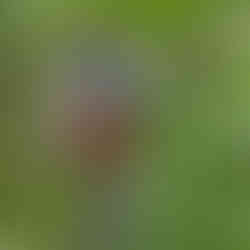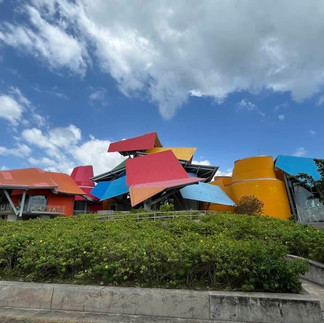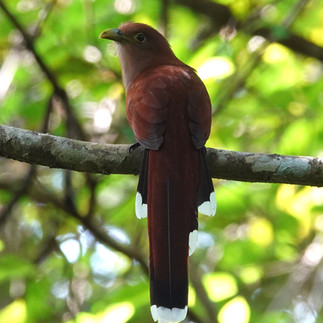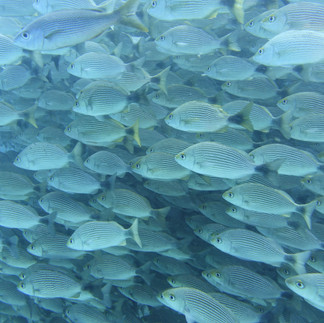Panama: Bridge of the World, Heart of the Universe
- Susanne

- Jan 31
- 5 min read
People in Panama believe they live in a very special part of the world and that feeling is enhanced via the country's slogan, "Bridge of the World, Heart of the Universe." While the Panama Canal has aided in making Panama a shipping hub, Panama is also a popular air travel centre, servicing Latin America. That explains the 'Bridge' part, what does the 'Heart' contain?
There are a few different theories on where the word, "panama" came from. According to Rod and Sherry Boyd (bloggers who have also visited Panama), the first theory is that it was a phrase used by fishermen in the village to describe the abundance of fish and other seafood in the coastal waters. Another explanation came from the time when the Spanish first landed here on the north coast. When they asked the locals where the goals and riches were, the reply was, "pana-ma" meaning "far away" or "go far away." Since the Spanish did not go away, and because there are plenty of fish still being caught, perhaps the first definition is the best one. In my mind, the protective feelings and love for their country more than adequately explain the "Heart" for Panamanians and perfectly describes the country's slogan.
Our stay in Panama started with a week in Panama City. One thing we like to do in large cities, if availalbe, is to buy tickets for the red bus (or the hop on, hop off bus). This gives the opportunity to get the lay of the land and figure out what what interets us so we can go back and spend more time. Like the fish in the ocean, city traffic is abundant. The cacophany of horns being blared combined with the sounds of vehicles of all types and sizes certainly takes some getting used to. Horns are honked to say hi, tell other drivers to make way, let you know when someone is cutting in, signal to allow other drivers in the lane, ask if you want a ride, and to expresss general distaste for being part of traffic! On numberous occasions, we heard someone lay on the horn when they were stopped at a red light as if to tell the light it was going too slowly. Slow moving traffic is what made the bus about 20 minutes late... a long time when waiting in the heat and humidity amongst all the noise!
The bus loop is supposed to take about 2 to 2.5 hours. We rode for approximately 1.5 hours before arrive at the Miraflores portion of the Panama Canal. It was a relief to stretch our legs and get into the interpretive centre with some air conditioning. While we were waiting for the IMAX movie to start, we introduced ourselves to a couple from Great Britain. They had the only 2 free chairs in the cafeteria at their table and it was worth asking if we could occupy them. As it turned out, they were taking a surprisingly similar trip as we were, except in reverse. We were all able to exchange a few travel tips and went on our ways. We watched the video about the making of the canal and its current expansion and then made our way outside to the viewing platform to see a ship being pulled down the canal by "mules" (special tugboats on rails on either side of the canal). However, a few hundred other people had the same idea and the platform was packed. We went through the adjacent building where it was less crowded and managed to watch one of the ships come through. It was amazing to see such a large vessel coming along a seemingly narrow channel and was well worth the visit.
Back to the hop on hop off bus. We were told that the bus was scheduled to arrive at about 3:00. However, it was about 45 minutes late. We were eager to finish the loop as the heat was telling us that it was Beer O'Clock. Once on the bus, we were able to see the other stops and make some notes about places we would go back to. Unfortunately, traffic was awful and instead of the 1 hour we were expecting, it was a full 2 hours before we arrived at our final stop. Our biggest tip for this bus is to make sure you have a full day free, especially if you plan on getting off to explore some of the sights. Be patient and you will get to where you are going.
We had two favourite stops within the city; one was the natural history museum (Biomuseo) and the other was the Metropolitan Park. The Biomuseu is fascinating. It is actually 5 separate buildings, each dedicated to a certain epoch in Panama's history. The colourful architecture is a fan favourite and well worth a visit. The tour starts with the geological formations and continues through prehistoric animals, human occupation (both pre-Columbian and Columbian) and finish off with a tour through space exploration and Panama's role within it. The garden is beautiful with a view of the canal and the ships waiting to go through. You need at least 2 hours to see the museum and do it the justice it deserves.
The Metropolitan Park is Panama City's version of New York's Central Park. This park, however, is a nature preserve that includes a long, uphill hike to a viewpoint of the city. We were treated to the sounds of howler monkeys and managed to spot a few interesting birds along the way. If you want to do the entire hike, 3 hours should be allotted to account for animal watching and taking much-needed water breaks in the shade.
After leaving the city, we made our way 5.5 hours south to a remote community called Pixvae. We stayed at a lovely eco-lodge, The Ark Divers, where we were treated to 5 days of amazing home-cooked meals and scuba diving. Audrey and Mike were perfect hosts. Audrey loves cooking and prepared the most delicious, gourmet, locally-sourced and nutricious food that was imaginatively presented. Mike provided us with all of the right gear and his boat captains and deck hands made sure we were looked after at sea. Coiba National Park is a protected site on the Pacific side of Panama. We were excited to have views of white tipped sharks, huge schools of fish of different varieties, and specatular underwater landscapes. A small manta ray even made an appearance!
Up to this point, Panama has been a great place to explore. The next blog post will focus primarily on the birds we see. We are taking a few days to stay in el Valle Anton (or el Valle for short) and will then participate in a 6 day birding tour in the Darien, another special part of the country.


















Comments